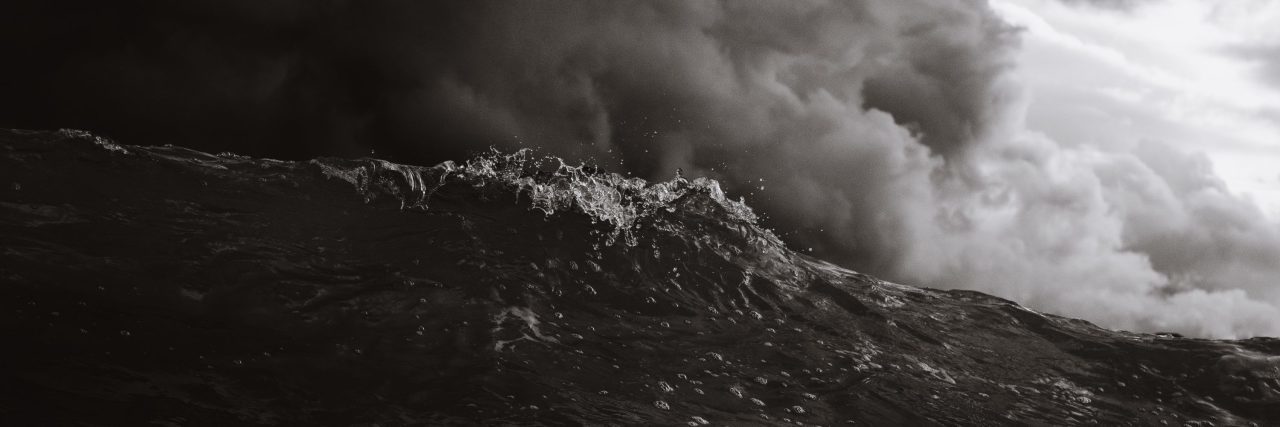There I was, tiptoeing on the edge of the seawall, gazing numbly toward the horizon as I watched the storm begin to form and roll toward the shore. One would think I would know well enough by now to batten down the hatches and shelter myself from the impending storm, but the tempest that came wasn’t the one I was expecting. Suddenly the gale force winds caught me tightly in their grip and swept me off my feet with such violence I had no chance to fight back. Blackened clouds consumed the sky and pushed out every speck of light. The wind carried me out and plunged me into the dark and stormy sea. My lungs quickly filled with water, forcing me to sink farther down into the depths. Simultaneously drowning and caught in a riptide, I went with my first instinct: fight for my life. I thrashed and kicked and squirmed until every ounce of energy had left my body, leaving me floating lifelessly in the abyss. There I was, barely holding onto consciousness, suspended in the ocean, well below the surface.
• What is Bipolar disorder?
Then I saw a glimmer of light shining down through the water above. Just as I began to swim toward it, the current kicked in, wrapping itself around my body, dragging me through the water like a rag doll. A burst of energy surged through my body, and I started swimming slowly with the current, pushing myself toward the surface. But each stroke I took was countered by the current, negating any progress I was making. I looked ahead and noticed the upward slope of the seafloor below me. My despair and hopelessness disappeared — I was so close to safety. Calm and clarity filled my body and I began to swim toward the surface again. For the first time, I was making progress, I was getting closer. Finally, I reached the surface.
Just as I took a breath, a rogue wave crashed over and slammed me back down into the depths. I resurfaced, just to be slammed down yet again. That time I gave up. The waves tossed me back and forth, above and below the surface, allowing me just a moment to catch my breath before they dragged me back down again. I succumbed to the waves, accepted I was at their mercy, just in time for me to experience the impact of my body being repeatedly thrown against the rocks just shy of the shoreline. Again. Again. Again.
After what seemed like an eternity, I found myself bloody, bruised and broken, lying face down on the sandy shore, the waves flowing ever so gently at my feet. With all that was left in me, I rolled onto my back and peered up at the sky. The sun was beginning to peek through the grey and dreary clouds. I had survived.
Living with bipolar II disorder means I have the “pleasure” of experiencing episodes of both depression and hypomania. These episodes can occur suddenly, out of nowhere, but they can also be triggered and exacerbated by a number of things. For many years, when spring approaches, I have tended to swing into hypomania. This year, however, I have been experiencing a depressive episode. I believe there are certain stimuli and stressors I am currently dealing with that have affected this year’s seasonal mood swing. I expected a hypomanic episode, and I felt adequately prepared to handle it. But, this year, it has been incredibly difficult for me to use my coping skills to avoid plummeting deeply into depression.
For so long it has been difficult for me to be able to explain what a depressive episode feels like, but an image of it came to me this week, and I wanted to attempt to put it into words. So, here it is!
Thankfully, I am starting to come out of this episode, or so I hope. I’m blessed beyond measure to have an incredible support system to help me get through to the other side. Recovery has not been easy, nor will it ever be, but I will continue to celebrate the progress I have made over the years.
Thanks for reading.
“Some days you will feel like the ocean. Some days you will feel like you are drowning in it.” — Lora Mathis
Follow this journey on the author’s blog.
Photo by Matt Hardy on Unsplash

